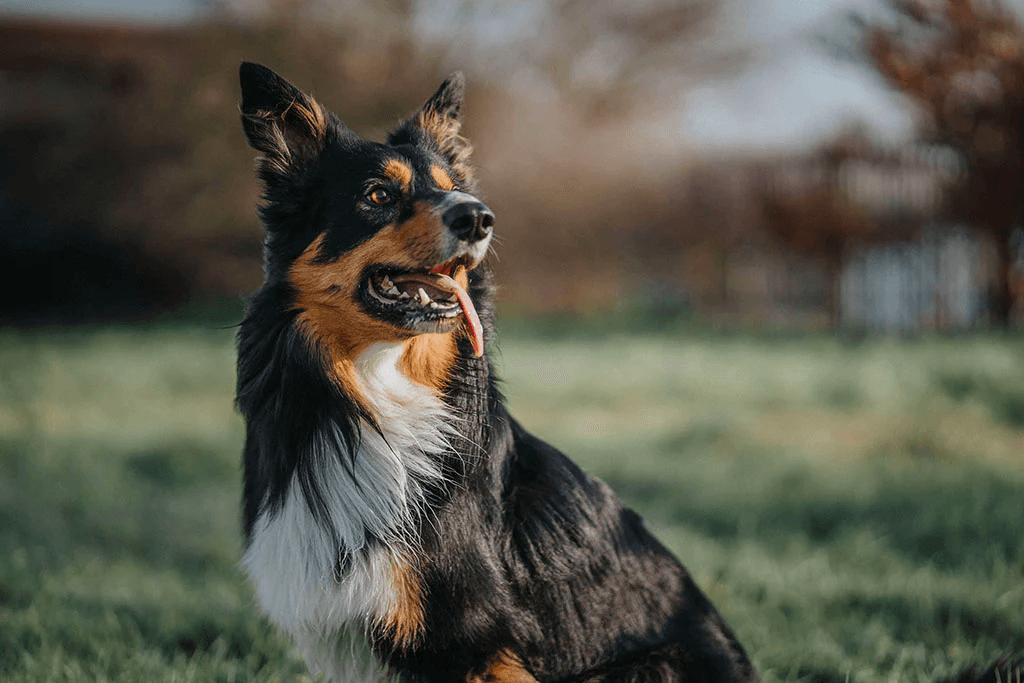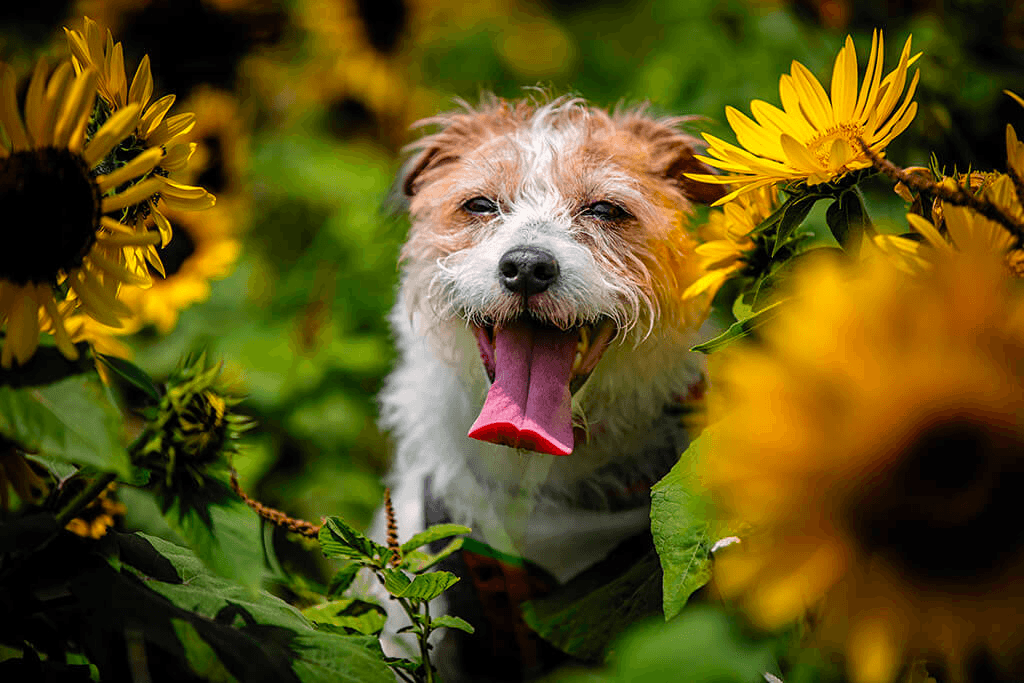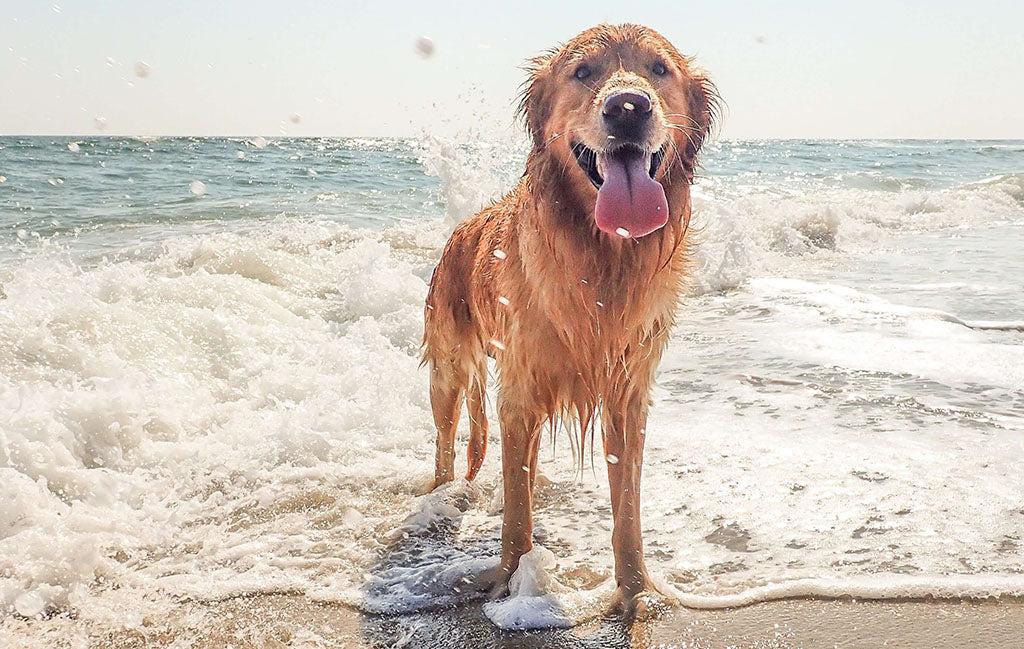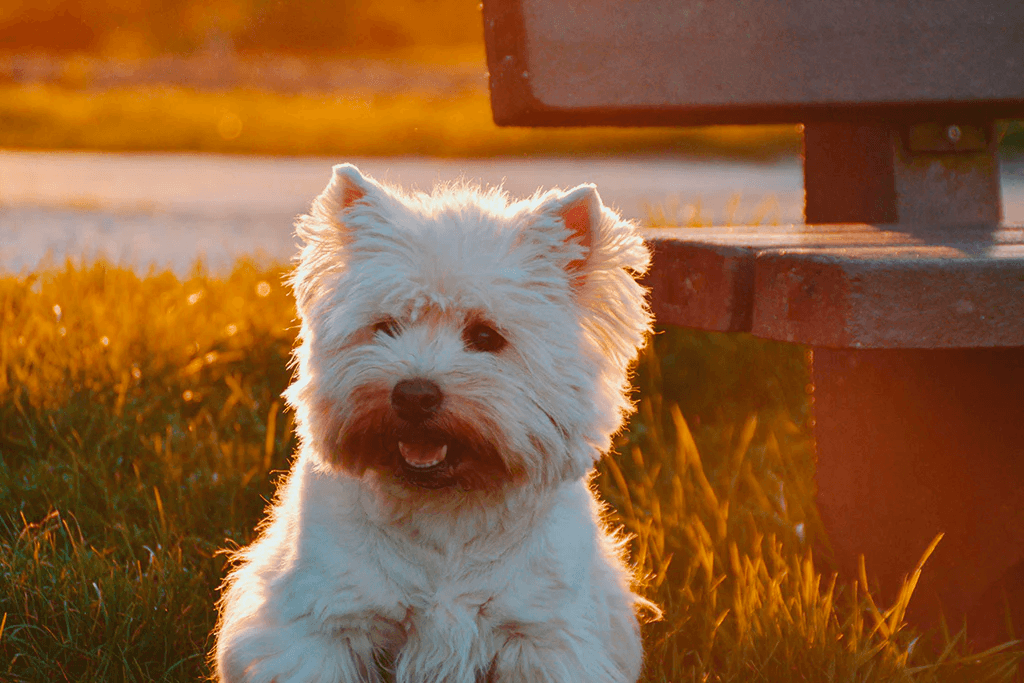If your dog has diarrhea or an upset stomach, feeding them chicken and rice is a healthy way to support their recovery. In this blog post, vet Jamie Clanin DVM explains how much chicken and rice to feed a dog by weight.
How Much Chicken and Rice to Feed a Dog With Diarrhea

Wondering how much chicken and rice to feed a dog with diarrhea? It’s never nice when your furry friend is suffering from an upset tummy, and it always seems to happen on a weekend, holiday, or when you’re super busy. So, what can you do at home to quickly help your dog feel better?
Dogs can get diarrhea for many reasons, including stress, eating something they shouldn’t have (your vet might call this dietary indiscretion), a stomach bug, intestinal parasites, getting too many treats, or even just a new food that doesn’t agree with them. Some of these things, like intestinal parasites, need specific treatment, but almost all of them will be helped by a bland diet.
A long-time favorite bland diet of veterinarians is chicken and rice. But how much chicken and rice should you feed a dog with diarrhea? Let’s find out.
Why Use Chicken and Rice for Dogs With Diarrhea?
There are numerous reasons veterinarians love chicken and rice as a bland diet for dogs. Here are some of them:
- Most dogs love it and will eat it even if they don’t feel great. Often, when your pup has an upset stomach, they don’t want to eat their usual food. Chicken and rice is an option that is both appealing and gentle on the stomach.
- Chicken is a high-quality, easily digestible source of protein. It’s essential to continue providing our pups with good nutrition while they’re not feeling well.
- Rice is a bland, easily digestible source of carbohydrates. This is especially important for dogs with stomach upset because the cells inside the intestines absorb nutrition directly from the food. Having something that breaks down easily and helps these cells heal is key.
- Chicken and rice are both widely available and relatively inexpensive. This is important for busy people, and vets get that.
- Both ingredients are easy to prepare safely. There’s no need for special equipment or standing over the stove stirring constantly.
On the other hand, there are a couple of problems that can come up when feeding chicken and rice. If your pup is allergic to chicken, this isn’t the best choice. In that case, you can substitute tilapia for the chicken. Also, if rice is undercooked, it can cause more diarrhea and your dog’s poop may have little white specks in it. Make sure to cook the rice thoroughly, so the center is completely soft.
Is Chicken and Rice Good for Dogs?
In the short term, yes, chicken and rice is good for dogs. It has high-quality, easily digestible protein and carbohydrates, which will keep your pup healthy while they heal.
However, chicken and rice is not an appropriate long-term diet. Even if you add some vegetables, this combination does not provide a proper balance of nutrients or all of the vitamins and minerals your dog needs to stay healthy over a lifetime. Malnutrition of this type can lead to a variety of issues, including bone, skin, kidney, and heart disease.
Preparing Chicken and Rice for Dogs

- Use boneless, skinless chicken breast and white rice. The bones and skin add a significant amount of fat that can cause further stomach upset, and the extra fiber in brown rice can have a similar effect.
- Do not use any spices, seasonings, oils, salt, pepper, or anything fun. Most dogs love the plain chicken and rice combination, and we don’t want to cause further stomach upset by adding things that could irritate their intestines.
- Chicken can be boiled or baked. Just be sure to let the juices drain away during baking to avoid excessive fat in the food.
- Rice should be boiled or steamed in plain water. Make sure that it is soft all the way through to avoid causing more problems.
- You can prepare several meals’ worth of food and freeze it or store it in the refrigerator. Because both chicken and rice can go bad relatively quickly, do not use the mixture if it has been refrigerated for more than 72 hours. If you want to make large batches, separate it into individual meals and freeze for the longest use.
How Much Chicken and Rice to Feed a Dog With Diarrhea
- First, make sure you mix appropriate amounts of chicken and rice. Ideally, this means two parts rice to one part chicken after both ingredients are cooked — measure based on volume (cups), not weight (pounds or kilograms).
- Consider having your dog skip one or two meals. If they are having uncontrolled or explosive diarrhea, giving their gut a chance to rest can help them heal and regain control of their bathroom habits.
- Once your pup is eating again, consider feeding small, frequent meals. Eating too much food at once can cause an upset stomach, so offer just a bite or two every couple of hours, if your schedule allows.
- Check the chart below to find out how much you should feed your pup. Keep in mind that smaller, more frequent meals are often easier on the stomach. It is also important to be aware that, because of the amount of water in chicken and rice, these meals may be much larger than your pup’s usual meal of dry food. It’s okay if they don’t finish it.
| Size of Dog | Amount to Feed Per Meal | |
| Two Meals Per Day | Three Meals Per Day | |
| 0 – 10 pounds (0 – 4.5 kg) | ½ cup | ⅓ cup |
| 10 – 20 pounds (4.5 – 9 kg) | ½ – ⅞ cup | ⅓ – ½ cup |
| 20 – 40 pounds (9 – 18.2 kg) | ⅞ – 1 ⅜ cups | ½ – ⅞ cup |
| 40 – 80 pounds (18.2 – 36.4 kg) | 1 ⅜ – 2 ⅜ cups | ⅞ – 1 ½ cups |
| 80 – 120 pounds (36.4 – 54.5 kg) | 2 ⅜ – 3 ¼ cups | 1 ½ – 2 cups |
| 120 – 160 pounds (54.5 – 72.7 kg) | 3 ¼ – 4 cups | 2 – 2 ¾ cups |
| 160 – 200 pounds (72.7 – 90.9 kg) | 4 – 4 ¾ cups | 2 ¾ – 3 cups |
Keep in mind that the numbers above are for young, active, intact (not spayed or neutered) dogs. If your dog has been fixed, doesn’t go for long walks at least twice a day, or is getting older, decrease these amounts by at least 10%.
When to Feed Chicken and Rice to a Sick Dog
Now that you know how to prepare it and how much to feed, how do you know when to feed chicken and rice to your sick dog? Here are some basic rules:
- Don’t freak out right away. Sometimes, your pup may have just eaten something that didn’t agree with them. They’ll have a single episode of diarrhea, and then everything will be okay again. So if they’re feeling well and the diarrhea has only occurred once, wait it out. Switching their diet, even to chicken and rice, might make things worse.
- Give their gut a break. As mentioned above, skipping one or two meals can help “reset” the intestinal tract. Once you’re sure this isn’t a one-and-done problem, don’t feed your dog for 12-24 hours. Make sure they have plenty of fresh water, though, so they don’t dehydrate.
- Start with small meals. Just a bite or two every couple of hours is all you want to start with, in case giving them food starts things all over again.
- Switch back to regular food slowly. See below for more information.
Transitioning Back to Regular Dog Food
Once your pup’s poop has returned to normal and they are feeling well, you can start switching them back to their regular food. Begin by mixing a small amount of their usual food with their chicken and rice. Over the next few days, slowly increase the amount of their regular food while decreasing the amount of chicken and rice until they are back on their usual diet.
Generally, the easiest way to transition from one food to another is the following:
- Day 0: 100% old food (in this case, chicken and rice)
- Days 1-2: 75% old food, 25% new food
- Days 3-4: 50% old food, 50% new food
- Days 5-6: 25% old food, 75% new food
- Days 7+: 100% new food (in this case, the normal diet)
While making this change, keep a close eye on your pup. They should continue to feel well, have a good appetite, and have normal bowel movements. If anything goes wrong, switch back to chicken and rice. Next time you try to switch back, consider giving each stage 3-4 days instead of just two, to make the switch even more slowly.
Chicken and Rice for Dogs With Upset Stomachs
Chicken and rice – not just for dogs with diarrhea! Because chicken and rice is gentle on the stomach while being highly nutritious, you can use it in most situations where your pup has an upset stomach.
Just as with diarrhea, feeding chicken and rice can help a vomiting dog heal faster than they might otherwise. That said, it is even more important to withhold food for 12-24 hours before offering chicken and rice to your vomiting dog than it is when they have diarrhea. And if your pup continues to vomit or refuses to eat after 24 hours with no food, they need to be seen by a veterinarian.
A bland diet, like chicken and rice, can also be used anytime your pup is not feeling great and not eating well because of that. On the other hand, many dogs can and will train their owners to give them special food. Don’t let your pup play you – only give them special food like chicken and rice when they’re actually not feeling well.
When to See a Veterinarian
While offering your pup chicken and rice for their upset stomach is a good start, sometimes it’s just not enough. If your pup is having any of the problems below, it’s time for a visit with their veterinarian.
- Diarrhea for longer than 48 hours
- Vomiting for more than 12 hours
- Difficulty swallowing food or water
- Refusing to eat for longer than 48 hours
- Refusing to drink water
- Inability to keep food or water down
- Feeling poorly while having vomiting or diarrhea
- Blood in their vomit
- More than a few drops or streaks of blood in their poop
- Poop that looks black and sticky (like tar)
- Pale or sticky gums
To encourage your pup to stay hydrated while waiting to see the veterinarian, you can mix low-sodium chicken or beef broth with water. Use equal parts of each. Often, the flavor encourages them to drink, provides a little bit of nutrition, and helps keep them hydrated without being too hard on their stomach.
Another option is to use full-sugar sports drinks such as Gatorade or PediaLyte. Avoid using sugar-free versions of these products, as some artificial sweeteners can be deadly to dogs.
Conclusion: Feeding Chicken and Rice to Dogs
Chicken and rice is a commonly used dietary tool to help dogs with mild stomach upset. It’s easy, inexpensive, and tempting for pups who aren’t feeling well. Generally considered safe and easy on the stomach, chicken and rice is a great place to start for dogs with diarrhea. Just be sure to reach out to a veterinarian if things aren’t settling down in a couple of days!

 J
J



